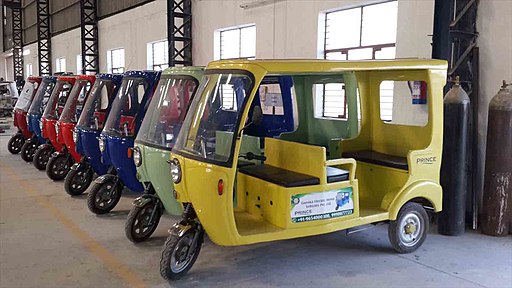The Electric Vehicle (EV) industry in India wants to roar ahead. We see intent, policy and lots of excitement.
Much activity has been going on in the Electric Vehicle segment in India. The government’s promise of making Indian roads 30% electric by 2030 is stirring up the Indian Electric Vehicle ecosystem.
India has been gearing up to fulfil its promise to become a full Electric Vehicle nation by 2030. Around India, EV bells are ringing.
According to a ToI report, after Delhi launched its Electric Vehicle policy last August, the city witnessed the registration of 739 EVs, a number that has spiked to 2603 this year. In fact, the city recorded more Electric Vehicle sales in the last two months than gas-run vehicles.
Telecommunications Consultants India Limited (TCIL) is being engaged by South Delhi Municipal Corporation (SDMC) to install 35 e-charging stations in the coming four months. This will also include 10 four-wheeler charging stations.
The Delhi Transport Department has also cleared a proposal to procure 465 e-buses, for which tenders are to be floated soon.
Uttarakhand recently announced a subsidy of up to INR 50,000 for the first 1,000 registered four-wheel Electric Vehicles and up to Rs 7,500 for the first 5,000 two-wheeler purchases. The Uttarakhand Pollution Control Board (UPCB) is ready to bear a cost of about 250 vehicle charging points throughout the state, an estimate of about a whooping INR 10 crore. Moreover, the state is also ready to bear the cost of electricity for the charging centres.
The government’s promise of making Indian roads 30% electric by 2030 is stirring up the Indian EV ecosystem
Also, the Odisha State Cabinet has approved the Odisha Electric Vehicle Policy 2021. The Himachal Pradesh government announced plans to set up more charging stations and charging points across the state. Assam has also notified the state’s Electric Vehicle Policy 2021.
However, challenges in terms of infrastructure and economic viability remain. India’s Electric Vehicle policy has been evolving. India has been carving the path forward by including not just four wheelers but also two and three wheelers.
India’s Plans for E3Ws
After four and two-wheelers, India has now been focusing on ensuring that a sizeable part of its six million three-wheeler fleet converts to Electric vehicles.
Apart from the environmental advantage, three-wheeled electric vehicles save on running costs for freight loaders and garbage disposal vans. They also offer easier options of battery change than four-wheelers, saving time taken on charging.
Hence, there is a demand for three-wheeled electric vehicles from cities that look to convert their garbage collection fleet into a greener and cheaper one.
State-run Convergence Energy Services Ltd (CESL), a wholly-owned subsidiary of Energy Efficiency Services Ltd, has offered an INR 3,000 crore tender to purchase one lakh electric three-wheelers for various use categories, like garbage disposal, freight loaders, food and vaccine transport, and passenger autos.
If or when it becomes a reality, going electric offers the best option for three-wheelers drivers.
“Of the six million three-wheelers on roads, EV is a very small percentage. Auto rickshaw is the biggest market. Then there is the freight and delivery business, which has gone through the roof after Covid struck. They want to buy the cheapest ride and the cheapest cost of delivery is met by electric,” Business Standard quoted CESL MD and CEO Mahua Acharya.
Challenges to Conquer
While policy for setting up electric vehicles in a section such as three-wheelers is in place, the ability of states and cities to set up infrastructure is hindering business. Among the challenges remain setting up enough charging stations, acquiring land, and the absence of large-capacity transformers.
According to the Grant Thornton Bharat-Ficci report, India will need some 400,000 charging stations for the two million EVs that are to be running on its roads by 2026.
According to Electric Vehicle industry body, Society of Manufacturers of Electric Vehicles’ data, India has 1,800 charging stations as of March 2021 for approximately 16,200 electric cars, including the fleet segment.
Among the challenges remain setting up enough charging stations, acquiring land, and the absence of large-capacity transformers
But, of the charging stations that are put up, utilisation has only been a measly 15%. To make them economically viable, at least 30-35% of capacity utilisation is needed.
Meanwhile, those who already own EVs, especially three-wheelers and two wheelers, face problems such as vehicles running out of charge in the middle of deliveries or drivers not being able to locate charge points to recharge battery packs.
Read more: {Startup Watch: Ultraviolette Automotive} A No-Compromise Electric Bike Experience
Decisions such as choosing the optimum location to set up a charging station are also figuring into decisions. It can make all the difference if a charging station is located at a cinema hall, a petrol bunk, or a mall.
Rise Up to the Challenge OEMs
India is now looking to OEMs to rise up to the challenge. In August, Union Road Transport and Highways Minister Nitin Gadkari asked vehicle manufacturers to deter diesel engine vehicle production and sale while virtually addressing SIAM’s annual convention.
He suggested the various available technologies for a roll-out of E20-compatible vehicles, which are a blend of 20% ethanol and 80% petrol. He also mentioned vehicles with flex engines, which offer an option to run on either 100% petrol or 100% bio-ethanol.
This will be immensely helpful in cutting our import bill and giving a direct benefit to our farmers, without a compromise on the environment
“This will be immensely helpful in cutting our import bill and giving a direct benefit to our farmers, without a compromise on the environment,” he said.
According to him, the petroleum ministry has plans for ethanol pumps in every district of the country. The government’s report, Expert Committee on Roadmap for Ethanol Blending in India by 2025, does discuss the gradual roll-out of 20% ethanol blending in petrol (E20) by 2025.
Spiff Up EV Bharat
There is also a need to spiff up the industry to attract customers, and Gadkari mentioned that the industry has to come up with optional features such as retro-reflective tapes, hand-rails, automatic helmet sensing-cum-reminder system, and stand detection system.
Asian Energy Services plans to invest into electric vehicle sector!
"electrification of vehicles is one of the avenues identified by ASIAN, with an aim to invest and diversify in the renewable sector"
Stock is up by 14%
New 52 Week High value 178.65
Volume by 33.67 times#ev— India Investing Bites (@fundoo_investor) September 16, 2021
Another cool prospect of Electric Vehicles is hydrogen fuel cells vehicles (HFCVs), which the Union Road Transport and Highways ministry is also exploring.
“Green-hydrogen is the fuel for the future. We need to find appropriate technologies for its generation, transportation and storage,” Gadkari said.
Green-hydrogen is the fuel for the future. We need to find appropriate technologies for its generation, transportation and storage
Other desirable technologies include low-cost indigenous battery technologies for Electric Vehicles and low-cost electrolysers.
Also, government policy is trying to keep the manufacturing within India as well.
Recently, the ministry of heavy industries, the entity behind India’s automobile policy, told Tesla that duty concessions will not be extended to it on just ‘intent to invest’.
The government’s suggestion is that the US auto giant should enter India with local assembly operations, later scaling up to complete manufacturing. The idea is to set up manufacturing facilities and not just import Electric Vehicles.
EV Startup Activity
As and when commercial vehicles become electrified by 2030, the vehicle charging market size is projected to touch US$2.7 billion. Startups are enroute to capture this opportunity.
In March, Ola announced plans to set up a cell manufacturing plant for powering Lithium-ion batteries. The ride sharing company also revealed plans for the world’s largest electric two-wheeler charging network called Ola Hypercharger Network.
As and when commercial vehicles become electrified by 2030, the vehicle charging market size is projected to touch US$2.7 billion. Startups are enroute to capture this opportunity
With India witnessing a rapid shift to electric mobility in the two and three wheeler segment, recently, EV Plugs launched a free app to fulfil the need among EV owners for a single go-to place for verified listings, so they know where to go for charging their vehicles.
BatteryPool, a 2018 founded startup that recently raised funds, has come up with a smart battery-swapping station for fleet and commercial Electric Vehicles. The swapping station is battery agnostic and software-enabled, allowing fleets and commercial Electric Vehicle drivers to swap their batteries and eliminate any downtime caused by charging their vehicles. The startup has some of the largest two- and three-wheeler EV fleets as its customers.
Build Up EV Trust
If India wants to make Indian vehicles at par with international standards in terms of crash safety, body designs, and corporate average fuel efficiency (CAFE) norms, focus has to be on what the consumer is being offered in terms of technology, design, and cost efficiency.
Indian EV must be reliable if it wants to be an EV nation by 2030.
Policy and intent are present. A symbiotic relationship with the startup and business sector will benefit the sector.
Read more: EV Bharat: The Common Man of India Has Started Thinking of EVs












